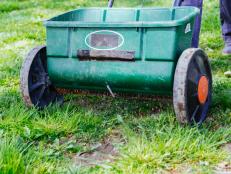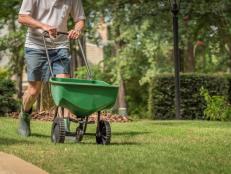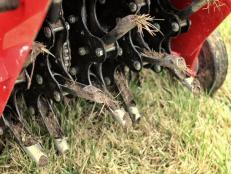Lawn Patrol: Take the pH Test

Flynnside Out Productions

A friend of mine recently posted to his Facebook page that, now that Labor Day has come and gone, he had tucked away his seersucker suit for the season and closeted his white shoes until Easter.
I thought, “Who in their 30s wears seersucker?” Maybe more than I initially would guess? But then he also wears bow ties. And we do live in Atlanta.
Even for those of us who don’t shop in the Matlock section of Macy’s, the flipping of the desk calendar past Labor Day means the process of saying goodbye to summer and welcoming fall has begun. Neighborhood pools generally close for the year about now, and school-age kids likely have just finished breaking in their new teachers. And for those who have — or want to have — a lawn with cool season grass such as fescue, it’s nearly time to spread seed or lay new sod.
There’s an extremely important first step in the process of a lawn makeover that Gary Peiffer, an agent with the DeKalb County Extension Office in Georgia, says many of us unfortunately leave out: Testing our soil for its pH level.
Soil pH is the measure of a soil’s level of acidity or alkalinity, and it affects how well grass can pick up nutrients from the soil. Check with your extension agent on the best pH level for the grass in your area.
“PH is going to determine how well your grass will grow,” says Peiffer.”PH is the key factor to just about everything.”
In addition to learning the pH level, taking a soil sample will give a pretty good indication of your soil’s texture and structure. Does it include too much clay? Is your soil extremely hard?
Based on what you find when digging into the soil, you could decide to till the soil and work in some organic material before laying down new sod or seed.
There are at-home soil pH testing kits available, or your local extension office should be able to analyze the soil sample you take from your lawn. Peiffer recommends taking samples from a minimum of 10 spots in your lawn, adding that you should dig at least 4 to 6 inches deep (the depth you’ll want your lawn’s roots to grow) and provide the extension office with a clean, dry soil sample. Also, identify what type of grass you plan to grow.
In addition to explaining the results of the test, your extension agent will be able to advise you on how to amend your soil so it’s prepared for that new grass.
If you’re hiring a landscape company to put in a new lawn, don’t assume they’ll take a soil sample and test it. Ask whoever you hire to do a test before they pull up to your house with a truck load of sod. Skipping a soil test could be an expensive mistake. Your costly new sod could die, or you could waste money on fertilizers.
“You need to start off right or you’re just wasting your time,” says Peiffer. “A lot of people balk at the price of a new lawn when they should be putting their money into the soil preparation, really.”
Starting with properly conditioned soil, then giving the sod long waterings, will give your new cool-season lawn the best chance to develop a deep root system — between 4 to 6 inches — so it can survive that warm, dry, seersucker-suit wearing weather next year.













































